The Long Shadow: the horrifying true stories behind ITV’s gritty true-crime Yorkshire Ripper drama

True-crime fans have been spoiled this summer. Earlier this year, people tuned in for the BBC thriller The Sixth Commandment; now, hot on its heels, comes ITV’s The Long Shadow.
Where The Sixth Commandment focused on the relatively recent story of Ben Field and his attempts to murder the pensioners he seduced, The Long Shadow is heading back fifty years to tell the dark and twisted story of the Yorkshire Ripper.
The Ripper, whose name was Peter Sutcliffe, conducted a campaign of terror between 1975 and 1980 that saw him murder 13 women and attempt to kill at least seven more.
The show, which premiered on September 25, follows the police’s attempts to bring him to justice (which is in itself a long and convoluted story). But what are the true-life stories of the people The Long Shadow is based on?
We break them down for you here.
Peter Sutcliffe, played by Mark Stobbart
Peter Sutcliffe, aka the Yorkshire Ripper, was one of the most prolific serial killers in modern history. Between 1975 and 1980, he killed thirteen women and attempted to murder at least seven more – and the search to find him led to one of the most expensive manhunts in British history.
Born in 1946 to a working class family in Bingley, Sutcliffe had a troubled home life: his mother, Kathleen, was regularly abused by his father, John, who was also an alcoholic. As a result, Sutcliffe idolised his mother – and was branded by John as “a wimp, always hanging from his mother’s apron, a mummy’s boy.”
Sutcliffe was bullied at school, and tormented at home. In his early twenties his father posed as his mother’s lover, luring her to a hotel to expose her infidelity to her children (two of whom, including John, he brought with him). This seems to have been a formative moment in Sutcliffe’s life – indeed, his father later said he “had a look on his face, like an animal, it were. I think it may have turned his mind.” After this, Sutcliffe began to develop a penchant for voyeurism, spying on sex workers in between working shifts as a lorry driver and grave digger.
In 1974, Sutcliffe married 23-year-old Sonia Szurma, the daughter of Czech refugees. The marriage was not a happy one: Sonia was diagnosed with paranoid schizophrenia while studying to become a teacher, and regularly suffered fits of anger, having to be restrained by Sutcliffe. After several miscarriages, the pair were told that they would not be able to have children, by which point Sonia had already had an affair with a local ice cream man.
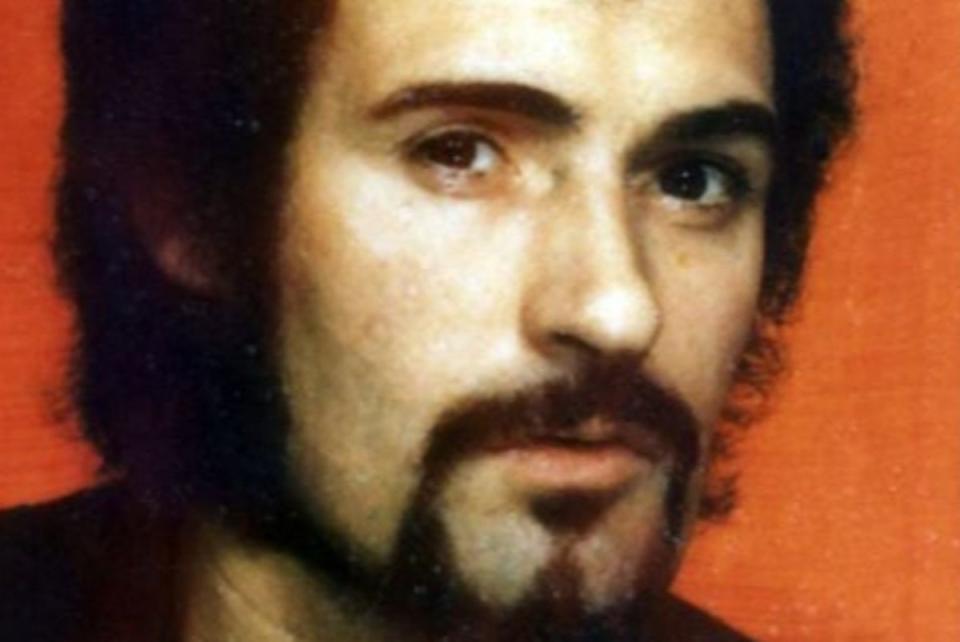
By all accounts, Sutcliffe started his campaign of terror in 1969, when he followed a female sex worker into a garage and hit her over the head with a stone in a sock. Sutcliffe fled, but was later found by the police, who told him he was lucky that she didn’t want to press charges. In 1975, he attacked three more women, striking them with hammers and slashing them with a knife, but ultimately didn’t kill them – though the attacks left lasting physical and mental scars. He was not identified at the time as the perpetrator of the attacks.
Suttcliffe’s first victim, in October 1975, was Wilma Mary McCann, a 28-year-old from Scott Hall, a suburb of North-East Leeds. She was found after having been attacked with a hammer and stabbed several times in the stomach; despite the following police investigation (which comprised 150 officers and 11,000 interviews) Sutcliffe was not linked to the case at the time.
Over the next five years, Sutcliffe struck again repeatedly, mostly targeting female sex workers but eventually moving onto university students too. Despite repeated lapses by Sutcliffe, the police investigation failed to find him: a five pound note he left at the crime scene could have been traced back to his place of work, while a photofit provided by one of his victims, Marilyn Moore, was not enough to secure a conviction.
All in all, Sutcliffe was interviewed eleven times about the Ripper murders – but he was only arrested in 1980, for drunk driving. While awaiting trial, he attacked another five women, killing 47-year-old civil servant Marguerite Walls and 20-year-old student Jacqueline Hill. In 1981, he was stopped by police with sex worker Olivia Reivers; his car, when checked, had false number plates and he was taken in for questioning regarding the Ripper case. He was able to hide most of his evidence – a rope, hammer and knife – when he slipped away to the toilet in the station, but when strip-searched police found that he was wearing a jumper underneath his trousers, with the V-neck exposing his genitals.
After two days of questioning, Sutcliffe announced that he was the Yorkshire Ripper and immediately started talking. During his confession, Sutcliffe was calm – claiming at points that God had told him to kill, and that the voice had emanated from the gravestone of Polish man, BronisÅaw Zapolski, while he was working as a gravedigger. “The women I killed were filth”, he explained during questioning. “Bastard prostitutes who were littering the streets. I was just cleaning up the place a bit.”
Sutcliffe ultimately pleaded guilty to seven charges of murder and after a two week trial was sentenced to life imprisonment. After the trial, he admitted to two other attacks – but their identities have never been revealed, as it was decided that prosecution for these crimes was “not in the public interest”.
In 2020, Sutcliffe died in hospital after being diagnosed with Covid-19.
DCS Dennis Hoban, played by Toby Jones
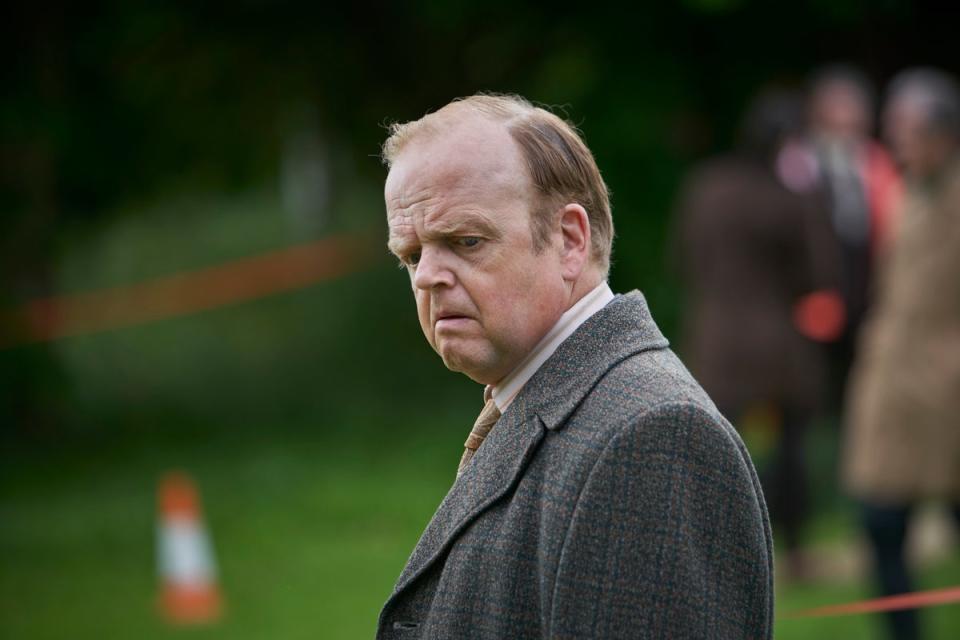
One of the first policemen to take the threat of the Ripper seriously, and one of the lead characters in the show. A Yorkshire lad through and through, Dennis Hoban hailed from Leeds and left school at 14 without any qualifications. Despite this, he rose through the ranks during his career to become the head of Leeds CID.
Hoban’s son, Richard, told the Yorkshire Post that for his father, the job was everything. “Although he loved his family he couldn’t bear not to be at the centre of things. For years my brother and I thought there had to be a murder on Christmas Day.
“When we were older we realised he’d probably asked one of his colleagues to ring him on the pretext of a serious case so he could escape from the house and get back to Brotherton House, the headquarters of Leeds City Police.”
Richard added that “he was totally and utterly in love with his job and put it in front of his family – working 16 to 18 hours a day, seven days a week and never taking a holiday, despite his poor health.” This amounted to doing everything his team did – to the extent that when he received a call about a blackmailer setting a bomb in a branch of Woolworths, he raced over and (armed with little to no knowledge) defused it.
Hoban was renowned throughout the force for his phenomenal clear-up rate and was one of the first police officers to recognise that the murders taking place around Yorkshire were the work of a serial killer.
He initially led the enquiry into the case, but it took its toll: Hoban died unexpectedly on March 15, 1978 – long before the Ripper was eventually apprehended in 1981 and brought to justice. Hoban was 52 years old, and his associates blamed the stress brought on by the investigation as one of the leading causes of his death.
DCS George Oldfield, played by David Morrissey

Godfrey Alexander Oldfield was born in October 1923 and grew up in York. He adopted the moniker ‘George’ from a young age, as he hated the name Godfrey – throughout his life, his family called him Goff.
In 1947, Oldfield joined the West Riding Police, rapidly rising through the ranks. By the 1970s he was a Detective Chief Superintendent and head of the West Yorkshire CID – and senior enough to lead the investigation into the M62 coach bombing, which was attributed to the IRA. Oldfield managed to secure a conviction for Judith Ward, who confessed to the killings and was sentenced to 30 years in prison – though this ruling was later overturned – which raised his profile significantly.
When the Ripper investigation landed on his desk in 1975, the investigation was just starting. Several women had been attacked or killed, and Oldfield confirmed that the police believed the crimes were being committed by the same person (giving rise to the Yorkshire Ripper moniker). Like Hoban, Oldfield devoted himself to solving the case, working long hours under immense strain.
Under his watch, the police received and then published a tape recording and letters from hoaxer Wearside Jack, who claimed to be the Ripper and taunted the police for not finding him. Oldfield was convinced he was the real murderer, and as the accent of the man on the tape was from around Sunderland, he devoted considerable resources to tracking him down, stalling the investigation by several years.
In August 1979, the Ripper case claimed another victim: Oldfield was taken ill with a chest infection and was off work for more than four months. It was later revealed that he had had a heart attack, and he never returned to the Ripper investigation. In 1985, he died aged 61 after a second heart attack.
Emily Jackson, played by Katherine Kelly
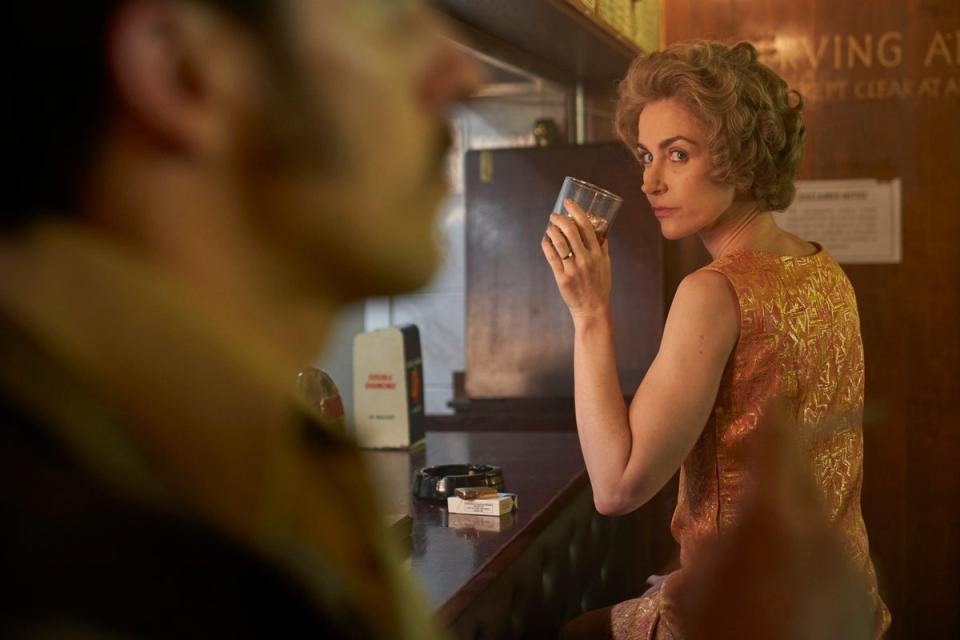
Emily Jackson was Sutcliffe’s second victim in his multi-year killing spree. Jackson, who was 42 at the time of her murder, was a mother of three in a family where money was tight. In December 1975, she agreed with her husband Sydney that she would go back to doing part-time sex work to make ends meet.
A few months later, she was picked up outside a pub in Leeds in January 1976. After Jackson got into Sutcliffe’s car, he drove her to half a mile away to the Manor Industrial Estate where he pretended that the car engine had died.
Jackson got out and volunteered to hold a light while he opened the engine; while she stood there, he battered her with a hammer and stabbed her a total of 52 times with a screwdriver. As he did so, he stomped on Emily’s leg, leaving a shoe print that was later identified as a Dunlop Warwick boot. Another partial print was found nearby – despite this, the shoe print was never matched to Sutcliffe’s.
At 8.10am the morning after, a workman taking a shortcut through Manor Street spotted a bulky object partially covered by a coat, which turned out to be Jackson’s body. Though her handbag was lying nearby, nothing had been taken from it, and she appeared to have been dragged there by the killer.
The police immediately linked her death to that of Wilma McCann, who had been attacked by the Ripper months earlier – but were immediately waylaid in their efforts to find him by the Ripper Hoaxer, who sent the police audio recordings and letters professing to be from the murderer. As a result, the police shifted the focus of their investigation away from Leeds and didn’t find Sutcliffe for another six years.
Sydney Jackson, played by Daniel Mays
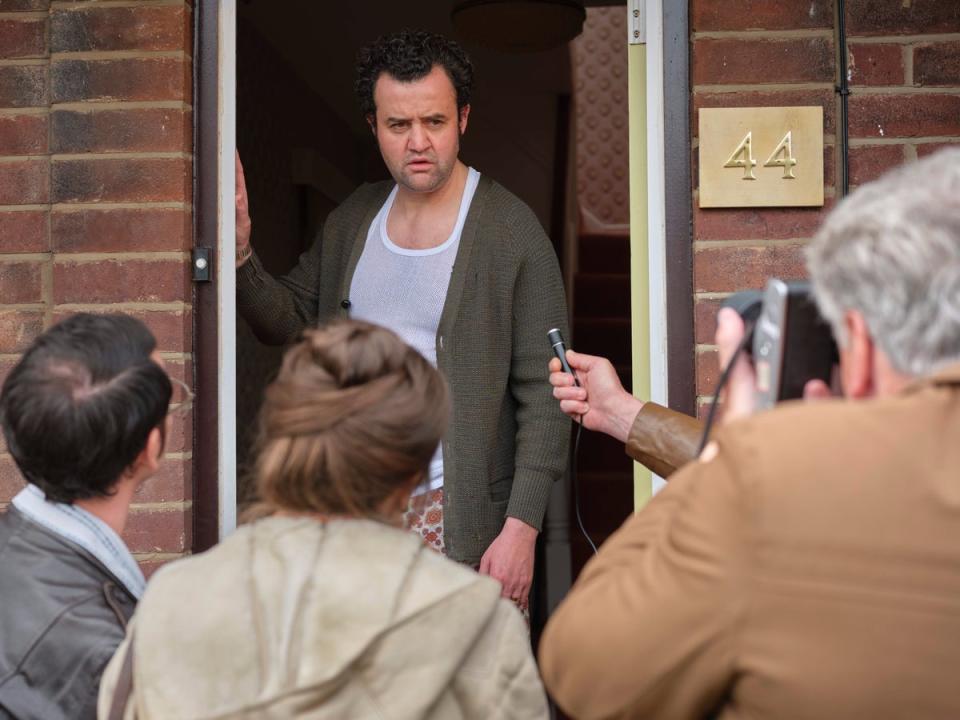
Sydney Jackson, played here by Daniel Mays, was Emily’s husband and a local roofing contractor. The pair lived in Churwell, on the outskirts of Manchester; Emily helped Sydney with the paperwork for his company and drove him from job to job in their old Commer van – Sydney did not drive.
When the pair had agreed that Emily would start doing sexual favours to earn the family some extra money, they also worked out a system by which Emily would be safe on the streets. Sydney would accompany her into town and sit at one of the local bars while Emily went looking for business, then they would drive back to their home together.
On the night in question, the pair had a drink at the Gaiety pub, where Sydney then waited for Emily. When she didn’t appear, he took a taxi home, assuming she would follow in the van.
Her death devastated Sydney, who sent his children away to stay with relatives until he felt he could tell them the news of Emily’s murder. Speaking to the Yorkshire Post, their son Neil Jackson said that her death tore the family apart. "When it first happened, all the family – my brother and sister – were all split up. We haven’t spoken in 40-odd years,” he said. "I’m here today through my own health and helping myself – there was no victim support or anything."
DCS Jim Hobson, played by Lee Ingleby
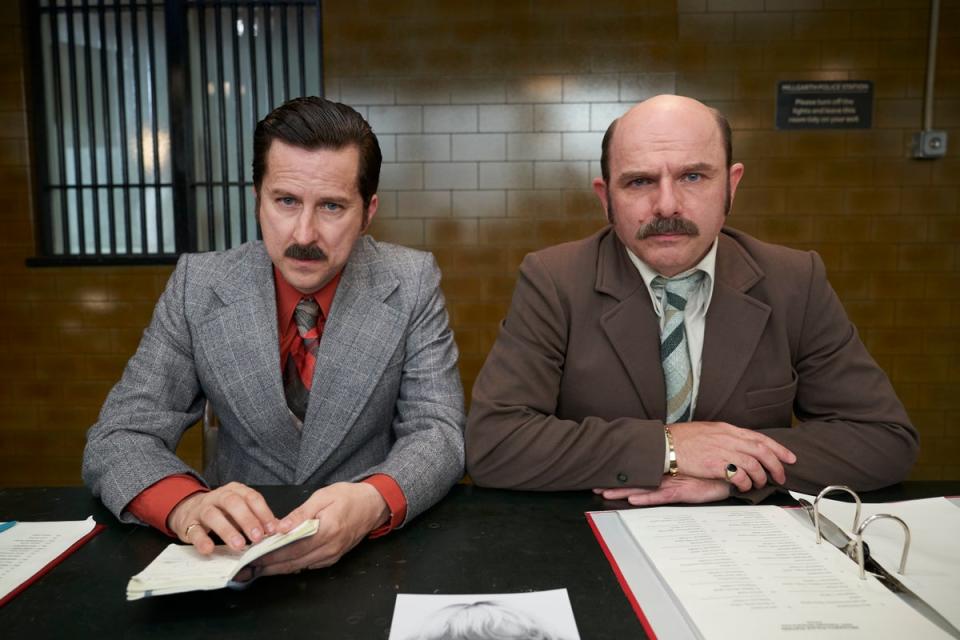
DCS Jim Hobson was the head of the CID in Leeds by 1975, and was responsible for investigating the attack on Tracey Browne – a Ripper victim, though her murder was never linked to Sutcliffe until he confessed to her crime in 1992. As a result, her killer was considered a “local”, and the photofit of the perpetrator was never widely circulated.
He later found himself leading the investigation into the murder of Irene Richardson in February 1977, having replaced Hoban as the head of Leeds CID seven months earlier. 28 years old, Richardson had two children in foster care and was living in a lodging house. Due to a lack of money, she had been forced to turn to sex work, walking the streets of Chapeltown to find customers – which was where Sutcliffe found her. Her body was discovered in Soldier’s Field in Leeds; she had been attacked with a hammer and violently stabbed. Again, despite leaving tyre tracks at the scene, these were never conclusively matched with Sutcliffe’s car.
A few years later, 47 year-old civil servant Marguerite Walls was violently assaulted by Sutcliffe, but Hobson concluded that she likely wasn’t a Ripper victim (which she was). After 20 year-old student Jacqueline Hill was murdered in 1980, Hobson replaced George Oldfield and assumed overall command of the case. As a result, he was promoted to Assistant Chief Constable.
Hobson later inadvertently gave voice to the sexism with which the police viewed the Ripper case during a press conference after 16-year-old Jayne MacDonald was killed on her way home from school. In it, he said that the killer “has made it clear that he hates prostitutes. Many people do. We, as a police force, will continue to arrest prostitutes. But the Ripper is now killing innocent girls.”
The Ripper exploited this distaste for sex workers to act with almost total impunity for years; it was only when he shifted his attention to other young women that the police started taking the case seriously.
Jacqueline Hill, played by Daisy Waterstone
20-year-old university student Jacqueline Hill, who died 17 November 1980, was the last known victim of Sutcliffe. Hailing from Ormesby in Middleborough, she was studying English at Leeds University, and worked as a Sunday school teacher in her spare time.
She had been for a meeting with probation services workers (where she had applied to volunteer) and had been to the pub. Her bus stop was 300 metres away from her halls of residence, and she was headed back at 9.20pm when Sutcliffe attacked.
At 10pm, somebody found Jacqueline’s cream-coloured bag at the scene of the attack; somebody else spotted blood spots and called the police.
Though police searched (for three minutes), they did not find her body. The next morning, it was discovered on a stretch of wasteland 100m away from safety: she had suffered four skull fractures and had been stabbed multiple times, including in the eye.
One of the probationary volunteers, whom Jacqueline had spent her last night with, said afterwards that “it never occurred to any of us that [walking home alone] was a risky thing to do. This was just getting too much. If somebody could be killed at 9.15pm in the evening in a reasonably busy area – this just took it up a level, this has got to stop."
It didn’t. In April, 16 year-old Theresa Sykes was attacked – though not killed, she was severely injured – but it was only in November 1980 that Sutcliffe was arrested.
Doreen Hill, played by Jill Halfpenny
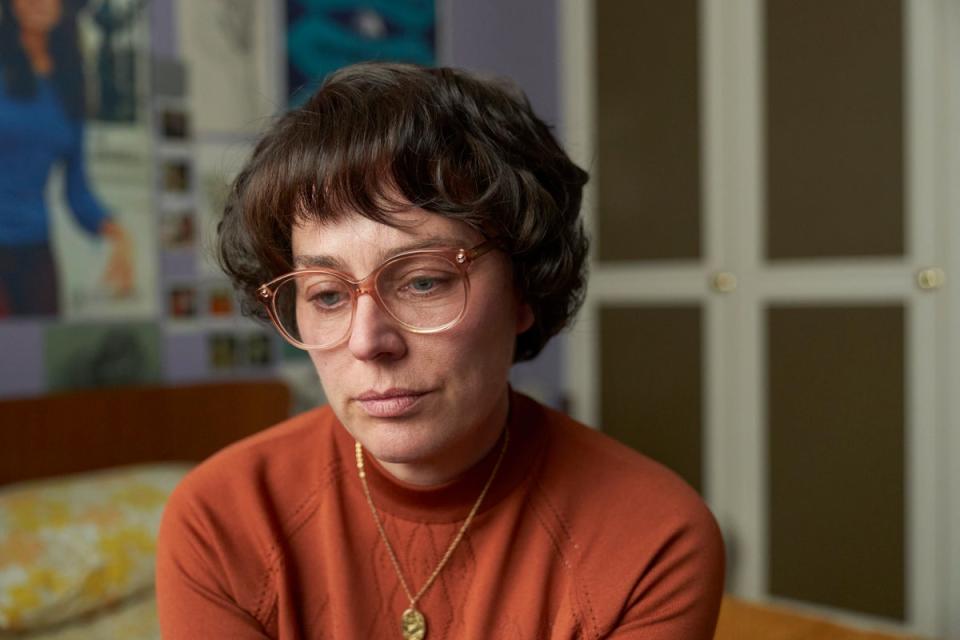
Doreen Hill was the mother of Jacqueline, Sutcliffe’s last murder victim. Originally from Middlesbrough, the Hill family was so concerned about the Ripper murders that they persuaded Jacqueline, a student at Leeds University, to move from her lodgings to the University’s Halls of Residence – in the belief that she would be safer there.
Jacqueline was attacked shortly after, on her way back from a seminar in the city centre. Doreen maintained after her death that her daughter would still be alive if it wasn’t for police incompetence – in particular their being duped by the Ripper hoaxer, who sent the police letters and audio professing to be from Sutcliffe. As a result of his interventions, the investigation was delayed by several years.
Speaking in 1981, she said that the Hoaxer "had a few deaths on his conscience".
Marcella Claxton, played by Jasmine Lee-Jones
One of the Ripper’s few surviving victims, Marcella Claxton was 20 when she was attacked on the way home from a party in Leeds, in May 1976.
Born in the West Indies, her family moved to Leeds when she was 10, and she was targeted by Sutcliffe as she left a late-night house party. Thinking she was a sex worker, Sutcliffe hit her over the head with a hammer – after which she passed out. However when she came around, she was able to crawl to a nearby phone box and hide from Sutcliffe – who came back to check if she was dead – before calling for help.
Claxton ultimately helped police produce a photofit identifying Sutcliffe, but her evidence was discounted because she was not a sex worker (and therefore, in the police’s minds, not a Ripper victim). She ultimately needed more than 50 stitches after the attack and lost her unborn child as a result of it.
Speaking after Sutcliffe’s death, Claxton said she still suffered as a result of the attack. “I have to live with my injuries, 54 stitches in my head, back and front, plus I lost a baby, I was four months pregnant. I still get headaches, dizzy spells and black outs,” she said. After the attack, she went on to have three more children and, as of 2020, works as a cleaner in a local secondary school.
The Long Shadow is available now on ITVX

 Yahoo News
Yahoo News 
